
Zoo InternQuest is a seven-week career exploration program for San Diego County high school juniors and seniors. Students have the unique opportunity to meet professionals working for the San Diego Zoo Wildlife Alliance, to learn about their jobs, and then blog about their experience online. Follow their adventures here on the Zoo’s website!
Today, the interns had the opportunity to visit the Nikita Kahn Rhino Rescue Center at the San Diego Zoo Safari Park. The project was started in the fall of 2015, with goals focused on white rhino conservation. Its primary goal is the reproduction of critically endangered northern white rhinos with the assistance of in vitro fertilization. Senior Wildlife Care Specialist Weston Popichak was there to guide the interns through the process, speaking on his experiences while working with these grand creatures.
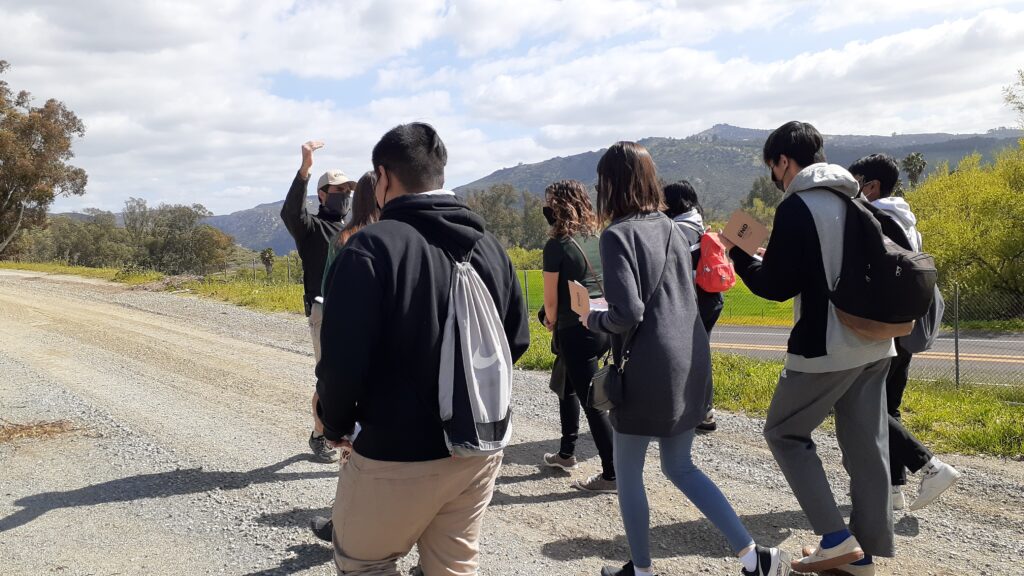
Mr. Popichak first knew he wanted to dedicate his life to helping animals back in high school. Knowing this, he attended Moorpark College after completing two years of community college to meet the prerequisites. He graduated from the Moorpark Exotic Animal Training and Management (EATM) program with four Associates degrees, and four certificates of achievement. In that time, he gained experience working with a variety of wildlife, such as mountain lions, bald eagles, and ring-tailed lemurs. The program also provided Mr. Popichak an opportunity to shadow keepers in the elephant department at the San Diego Zoo Safari Park. Going into the experience with an exemplary attitude and an open mind, he was able to network and form relationships with the Wildlife Care Specialists. This came in handy later when he graduated and they recommended him for a position in the elephant department. He worked there for four years developing vital teamwork skills before transferring to the Animal Care Center where he worked for three years. There he had the chance to work with many neonatal mammals such as cheetah cubs, and learn how to make specialized formulas for each species. When the Rhino Rescue Center (RRC) opened in 2015, Mr. Popichak and two other Wildlife Care Specialists were chosen to work with the rhinos to help preserve their species.
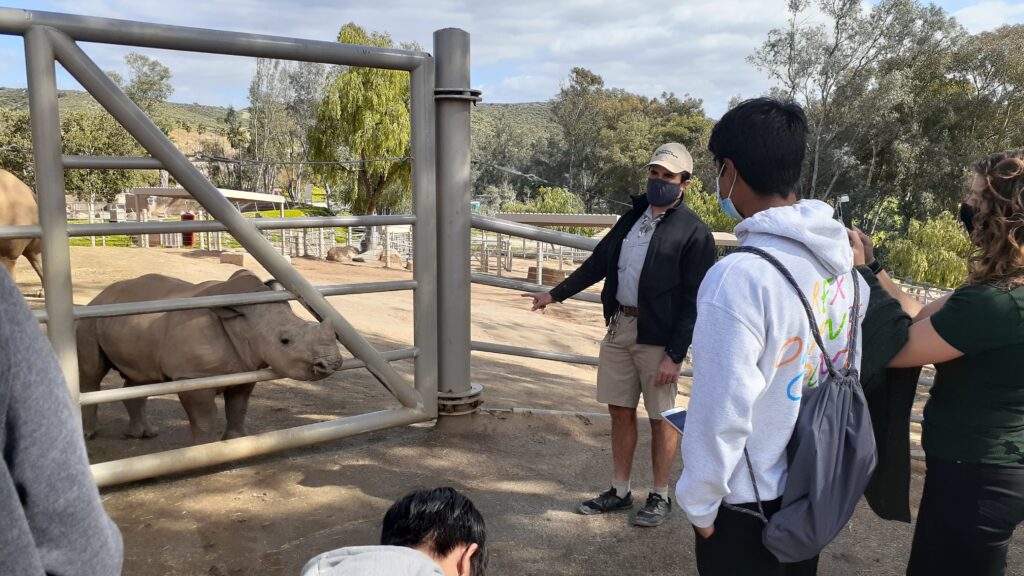
Rhinos are some of the most iconic African animals, but rarely do you ever see one with your own eyes. The interns had the opportunity to meet the incredible southern white rhinos. Unlike the misconception of rhinos being wildly hyper-aggressive, southern white rhinos are surprisingly mellow and relaxed unless provoked. Arthur, an objectively cute and energetic baby rhino, was the first the interns met. Arthur’s mom wasn’t able to take care of him, so he was hand-reared and carefully integrated into a herd of four female southern white rhinos who protect and raise him as their own. He and his “mothers” are fed over three times a day with a diet of Bermuda grass. Southern white rhinos, like Arthur, are native to the savanna plains of South Africa where they typically roam as a group– unlike northern white rhinos. Southern white rhinos were once thought to be extinct due to mass poaching for their horns (which are composed of keratin), but a small group of less than 100 individuals was discovered in South Africa in 1895. After mass conservation efforts, their numbers rose once again. Currently, the southern white rhino is threatened and poachers still kill thousands every year at a faster rate than the rhinos can reproduce. Only about 19,000-21,000 southern white rhinos are left, and even fewer northern white rhinos remain (only two). Poaching is also the greatest threat to northern white rhinos; while conservation organizations including the San Diego Zoo Wildlife Alliance work to protect rhino habitat and eliminate the threat of poaching, the RRC's mission is to repopulate the northern white rhino through genetic research. Families like Arthur’s are incredibly important to the future success of all rhino species and are the pride of the RRC.
Mr. Popichak’s job as a Wildlife Care Specialist is to work together with his colleagues and the rhinos in their care to carry out tasks vital to the program’s main goal. This goal is to help bring back the northern white rhino from the brink of extinction, as well as repopulate the southern white rhino. One way this is done is by working to educate the public on the effects and dangers of poaching, as well as alternative methods to traditional cultural medicines that use things such as rhino horn as an ingredient. Another way Mr. Popichak and his team work to help rhinos is by training the southern white rhinos at the RRC to participate in their own health care, which allows the Care Specialists to humanely perform procedures such as blood draws, ultrasounds, and regular exams and checkups. Each member of Mr. Popichak’s team works as a primary trainer with a few rhinos (primary trainers teach new behaviors) and as secondary trainers with the others (secondary trainers work to make sure already learned behaviors aren’t forgotten). They use a variety of ways to help the rhinos learn, such as operant conditioning and positive reinforcement. They also use specific tools to help communicate while training, such as whistles and clickers. Teaching the rhinos to associate a procedure with treats or other rewards helps the southern white rhinos to be as healthy and happy as possible, and be valuable contributors to help their own subspecies grow as well as their northern counterparts.
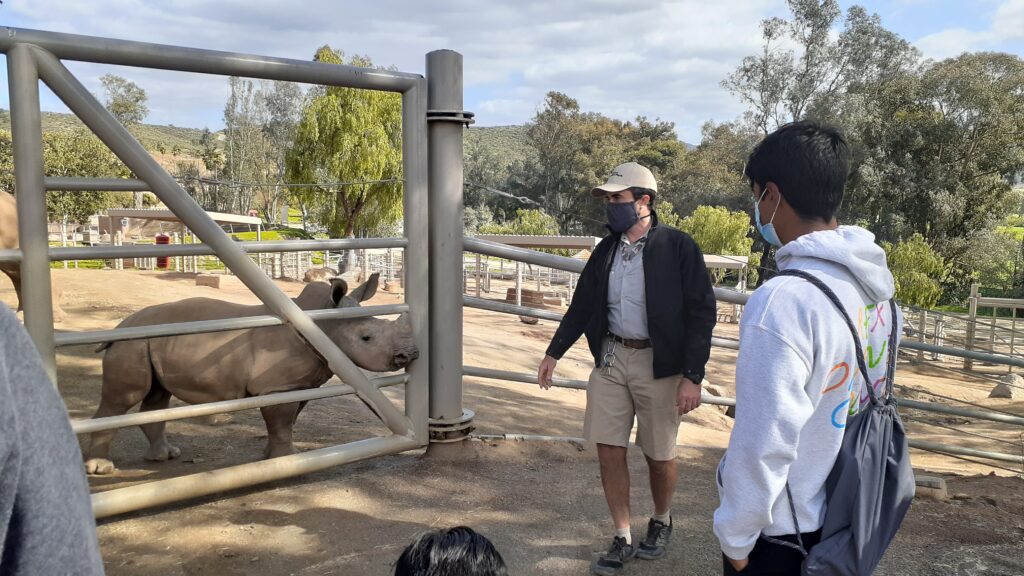
The Wildlife Care Specialists at the RRC are working to breed rhinos to boost their population numbers. There are two ways for a female rhino to get pregnant with human assistance: in vitro fertilization (IVF) & artificial insemination (AI). IVF works by combining an egg from a female with the sperm of a male to create an embryo in a lab. This embryo is then implanted in another female. In the case of the northern white rhinos, we don't have their sperm or eggs, we only have their skin cells. So scientists have to do an extra step: they have to convert the skin cells to stem cells, which then will be converted to sperm and eggs. The hope is to use frozen genetic samples from northern white rhinos to create embryos, which will then be placed inside the southern white rhinos. These two species are so closely related that the females should be able to carry the offspring, acting as surrogates for their sisters. The RRC currently have skin samples from 12 northern white rhinos to use for IVF. AI is a more simple method– semen is collected from the male and then injected into the female, hopefully resulting in pregnancy. The use of AI is efficient because the animals don't have to be moved from one facility to another in order to breed specific individuals. The semen can be collected from a male and injected into a female across the world. One of the major achievements of the RRC is the birth of two southern white rhinos, Future and Edward, through artificial insemination. Through the use of IVF, the hope is that the northern white rhino population will be increased enough to eventually be reintroduced to their habitat. Until poaching ceases to be a major threat, the possibility of releasing these rhinos back into the wild is going to be very small. Scientists do not want to release these priceless animals into a habitat that continues to be deadly for them. However, there are some ways you can help stop poaching. You can talk about anti-poaching and educate people about rhino horns. Rhino horn is sought after for its supposed medicinal uses, but as it’s made out of keratin its consumption is no different than chewing your fingernails! Sharing information about rhinos with others can help change views and reduce the demand for poached rhino horn. You can help by supporting conservation organizations that focus on saving rhinos.
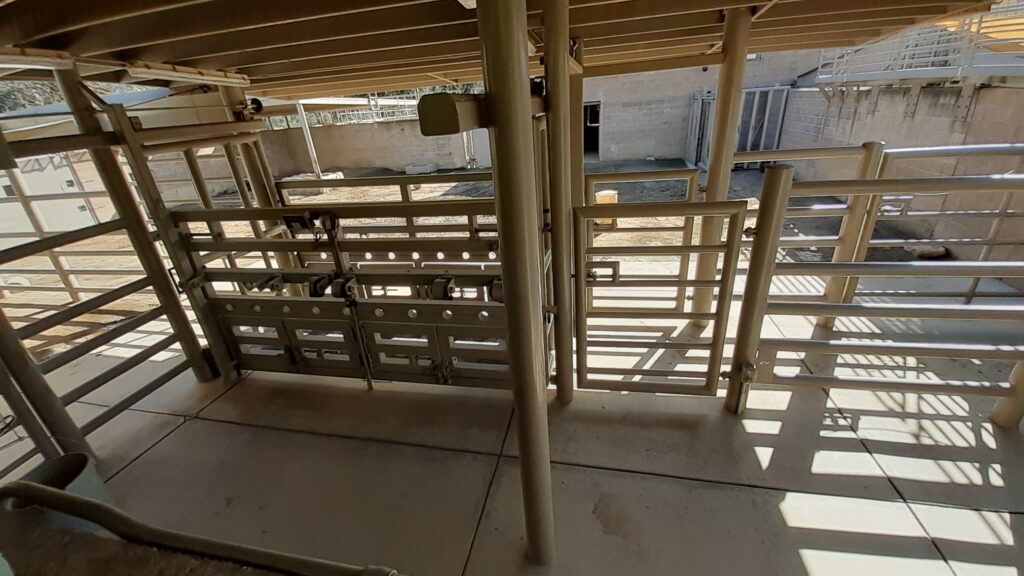
As a Senior Wildlife Care Specialist at the RRC, Mr. Popichak’s job never ceases to surprise him– even after 12 years! Having worked with every rhino at the center, one of Mr. Popichak’s favorite experience has been working with Wallis, a southern white rhino who came to the Safari Park in November of 2015. When she first arrived, caretakers noticed discharge coming out of a small hole near her heart. Over the next six months, she went through two separate surgeries in an attempt to clean out and heal the wound, but the pin-sized hole would still not fully close. It wasn’t until training Wallis to stand still for an X-ray, done by a machine the San Diego Fire Rescue Bomb Squad lent them, that her caretakers were sure the reason for the hole was a bullet. Wallis was most likely shot by a poacher back when she was living in the wilds of South Africa. Luckily, over the course of her treatment, the bullet fragment naturally surfaced like a splinter, and the attending veterinarian was able to pull it out with pliers. Without the immense amount of trust Mr. Popichak had built up working with Wallis, treating her would have been more challenging. Comparing his relationship with animals to a bank account, each interaction being a deposit of trust, it was a lot to ask of Wallis to undergo multiple surgeries so soon after her arrival. Wallis continues to thrive at the RRC with Mr. Popichak, who works as her primary trainer.
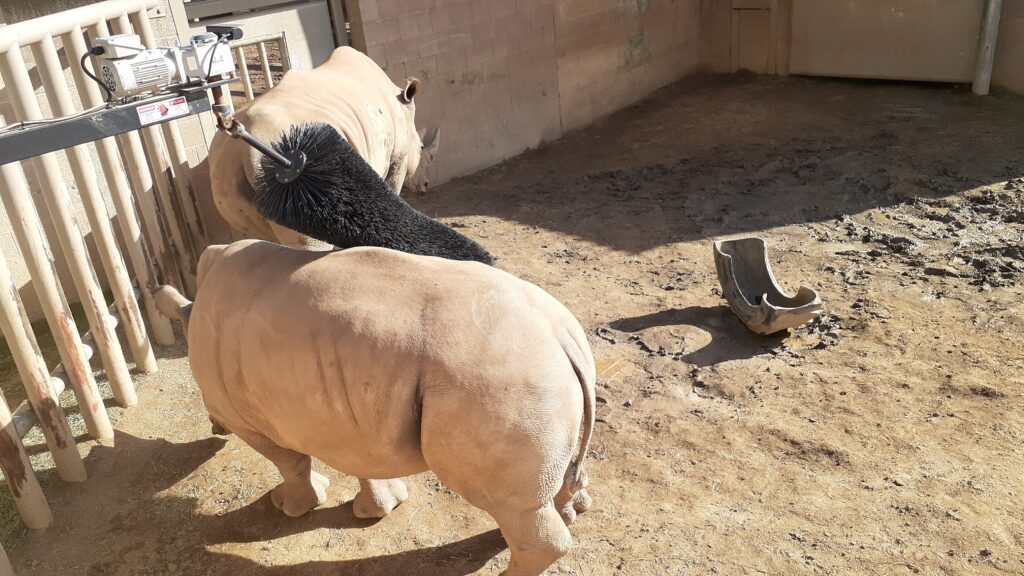
Mr. Popichak’s journey was born out of an unwavering desire to help others, people and animals alike. This became evident as the interns listened further to his passionate tangents about his career and how he got there. In such tangents, Mr. Popichak made sure to emphasize the importance of humility and teamwork in the wildlife caretaking field, stressing that the flow of positive and constructive criticism between colleagues is crucial in projects like the RRC. His role as a Senior Wildlife Care Specialist was cemented not only through his networking skills, but also through his genuine love for what he does. Mr. Popichak suggests that those still unsure about what to do with their careers should do what they want to do without external influences. “Pretend your family and friends aren’t there when you choose your job. You’ll come up with some pretty crazy stuff, but it’s fine as long as you’re doing what you love.”

A day as enlightening as this was truly an experience that’ll never be forgotten. The interns got to meet the enthusiastic Arthur, along with the rest of the rhino crew. With the guidance of our presenter Mr. Popichak, the interns learned about the amazing scientific advances that aim to recover northern white rhinos.The recovery of this species also relies heavily on teaching others why stopping the practice of poaching is beneficial not only for the conservation of our beloved white rhinos, but for the conservation of all wildlife.

Week Three, Spring Session 2021




